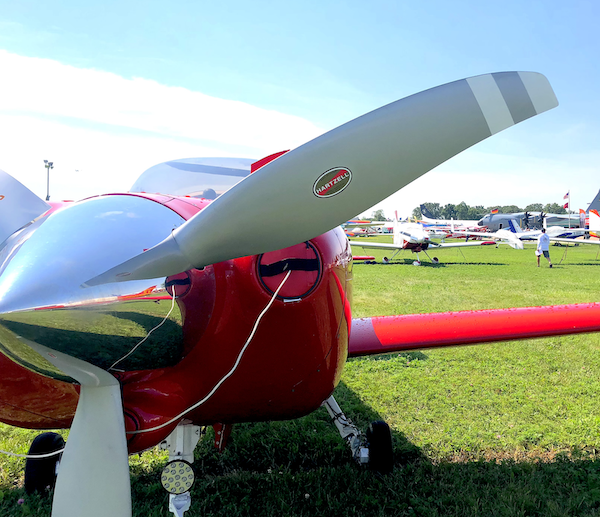
February is known as the month of love, and for pilots, there’s no better time to give a little extra care and attention to our airplanes — especially the propellers. After all, the propeller is one of the hardest-working components of your airplane, with each blade enduring 10 to 25 tons of force to get you safely to your destination. Not to mention, sleek propeller blades are the first thing people notice about your airplane on the ramp. What’s not to love?
Read on for a few ways to show your prop the love it deserves:
A comprehensive inspection of the aircraft propeller should be a part of every preflight. This includes examining the propeller blades and hub for obvious signs of damage such as nicks, gouges, cracks, missing hardware, oil leaks, corrosion, and erosion. Not sure what to look for? Check out Hartzell’s maintenance videos for preflighting tips for both aluminum and composite airplane propeller blades.
If you do discover signs of damage or have any questions, consult a reliable prop shop. Remember, even small nicks or cracks can grow and potentially lead to blade failure. It’s best to have seemingly minor issues addressed before they turn into bigger, more expensive problems that put your safety at risk.
A clean propeller is about more than ramp appeal; it’s an important way to protect the paint and prevent harmful corrosion and wear. Keep these tips in mind when cleaning your prop:
● Don’t use harsh chemicals or cleaning products. A gentle cloth and a simple cleaning solution of dish soap and water will do the trick to remove dirt, dust, pollutants, and insects from the propeller blades.
● Wipe each blade in a downward motion. This will prevent water from running back into the hub, which can cause corrosion and damage sensitive seals.
● Polish with care. We know that seeing your reflection shine in the propeller spinner is satisfying! Just be careful about the products you use near your prop. If you have an aluminum spinner, we recommend using an automotive-type aluminum polish and a buffing pad.
Before starting up, do your best to clear away any debris within four to six feet of your airplane. Rocks, loose hardware, and even trash can fly up into the air during high-power, static run-ups and may result in FOD (foreign object damage) to your airplane and surrounding planes or people.
After operating on gravel or dirt runways, always inspect the propeller blades for signs of nicks and other damage. If you frequently use unproved strips such as grass, gravel, sand, or snow, consider the advantages of a more rugged backcountry propeller. In particular, composite propeller blades are engineered to withstand the most demanding backcountry flying environments. Plus, now through the end of 2022, Hartzell is offering a special backcountry propeller discount exclusively for members of the Recreational Aviation Foundation (RAF).
Just like aircraft engines, propellers have specific overhaul intervals usually expressed in either flight hours or calendar time, whichever comes first. Pay close attention to your propeller manufacturer’s published TBO limits, which are intended to protect your safety and the performance of your aircraft. Even if your propeller appears to be in fine condition, internal issues such as corrosion and seal aging can develop over time and are often only detectable during a complete propeller overhaul. For more information about when to overhaul your Hartzell aircraft propeller, refer to your Service Letter.
Moving around your airplane by pushing or pulling on the propeller is never a good idea, even if it seems convenient at the time. Doing so can put the propeller blades out of track and damage hub seals. Play it safe and use a quality tow bar instead!
As a reminder, always ensure the tow bar is disconnected as part of your preflight. Forgetting this step and starting up with the tow bar still attached can lead to a prop strike and significant engine damage. The rule of thumb is that if you’re using a towbar, the towbar remains in your hand.
These steps may seem simple, but it’s surprisingly easy to overlook the propeller. Take the time to show your utmost care and respect, and your propeller will reward you with hours of happy, safe, and efficient flying! Do you have any questions about your propeller? Please contact the Hartzell Propeller technical team. We’re always happy to assist you.

P.S. We’d love to hear (and see) why you love your Hartzell prop! Share your stories, photos, and videos with us on Facebook, Instagram, or Twitter for the chance to be featured in our annual Leading Edge magazine.